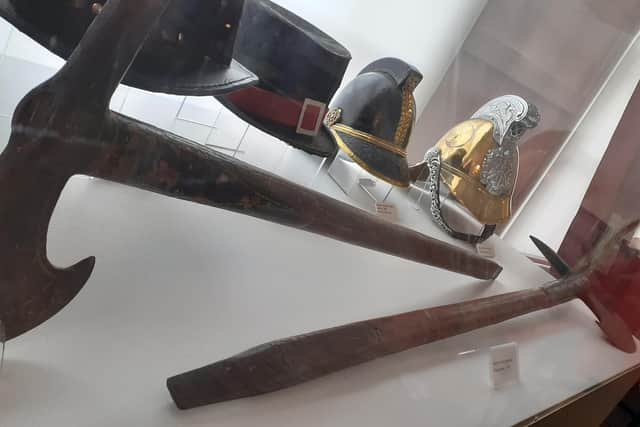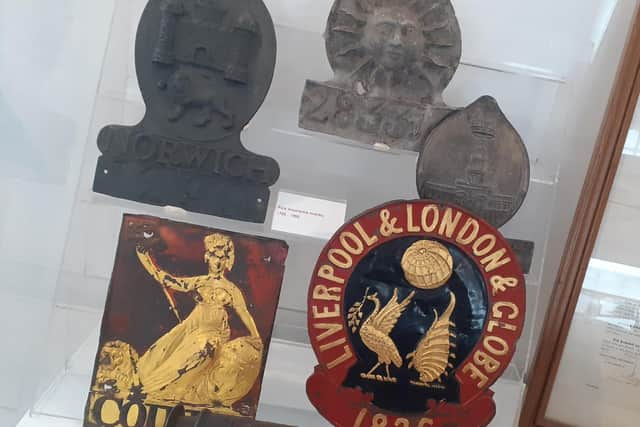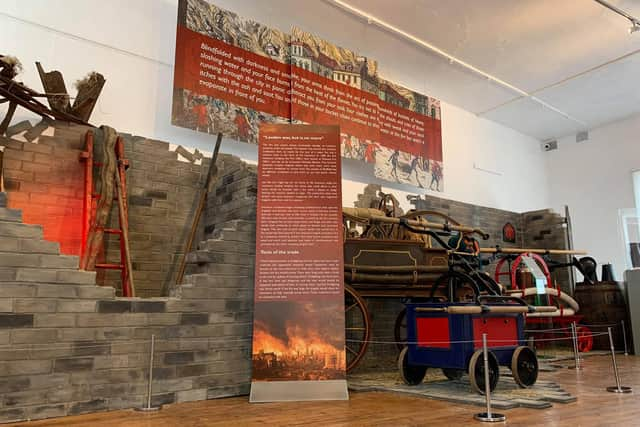Find out amazing story of first fire brigades at Sheffield National Emergency Services Museum
and live on Freeview channel 276
But how did people fight fires before organised brigades – and their specialist training and equipment - existed?
That’s the story that is being told in a new exhibition which is now open at Sheffield’s National Emergency Services Museum (NESM).
Advertisement
Hide AdAdvertisement
Hide AdThe exhibition includes vehicles and objects dating back more than 250 years and reveals the fascinating origins of our modern fire brigade.


NESM curator Holly Roberts says: "The image of the firefighter is so much part of our culture that many people don’t realise that having a professional, trained brigade ready to respond to emergencies is a relatively modern invention. Our new exhibition aims to show people how we got there.”
It wasn’t until 1824 that the world’s first municipal fire brigade was established in Edinburgh.
Yet, as the exhibition shows, the foundations of the modern fire service go back a further 150 years to the famous Great Fire of London.
Advertisement
Hide AdAdvertisement
Hide AdThe blaze that broke out in Pudding Lane in 1666 raged for almost five days and destroyed the old City of London. Without an organised response it was left to the people of the city to tackle the inferno with nothing more than buckets, axes, fire hooks, basic water squirts and even gunpowder.


It was an almost impossible task and it’s little wonder that the city was reduced to a smouldering ruin.
The result was the creation of the first fire insurance company, the Fire Office (later the Phoenix Fire Office) in 1680.
Other companies followed – including well-known names like Norwich Union – and soon there were many different companies to choose from. Sheffield alone had six!
Advertisement
Hide AdAdvertisement
Hide AdHolly says: “These companies worked just like car or home insurance today. Those who could afford it would pay a premium to their chosen provider and a fire mark - a metal plaque bearing the company’s logo - would be attached to the outside of the building.


“In the event of a fire a team of the company’s firefighters, usually volunteers, would arrive to tackle the blaze.
“This system was certainly an improvement on what had gone before but was still nowhere near what we would recognise as a modern fire service.
“For a start companies would only attend fires at properties they insured. It was not uncommon for an insurance brigade to stand and watch a building burn if it was protected by another company, at least until they were promised payment.”
Advertisement
Hide AdAdvertisement
Hide AdLadders, leather buckets and fire hooks - long poles that could pull burning thatch from a roof - were about all firemen had to work with.
NESM’s exhibition showcases some of these early tools, including original fire axes, buckets and stirrup pumps used by insurance brigades.
Replica uniforms and an original firefighter’s top hat dramatically demonstrate just how little protection these early volunteers had when tackling a blaze; the frock coats donned by firemen would look more at home in Pride and Prejudice!
That began to change during the 18th and 19th centuries as engineers, inventors and manufacturers turned their talents towards improved methods of firefighting. The museum’s exhibition includes some of these technological strides, such as examples of early hand water pumps and the bigger, more efficient horse-drawn engines.
Advertisement
Hide AdAdvertisement
Hide AdHolly says: "The word ‘fire engine’ conjures up such a particular image, many of our visitors are surprised to see what a state-of-the-art engine looked like in 1800.”
Despite the impact insurance fire brigades had on the development of firefighting, during the 19th century it became clear that having so many competing brigades - and the ongoing uncertainty that caused about who should deal with which incident - meant a more efficient approach was needed.
Nine years after the first municipal brigade in Edinburgh was founded its chief, James Braidwood, was brought to London in 1833 to lead the London Fire Engine Establishment (later the Metropolitan Fire Brigade), which combined 10 insurance brigades into one organisation. Other local authorities around the country followed suit, with Sheffield gaining its own city brigade in 1869.
These new municipal brigades initially took on some of the equipment, stations and even volunteers from the insurance brigades. But, unsurprisingly for the pioneering Victorians, the pace of change moved on rapidly during the rest of the 19th century as brigades took a more scientific approach.
Advertisement
Hide AdAdvertisement
Hide AdHolly says: “Many of the things we associate with firefighting today originated in this period, including the wheeled fire escape, the modern extinguisher and even breathing apparatus.
"The image of a firefighter starts to develop at this time too, with the introduction of military-style uniforms and the iconic brass helmet, which you can see in our exhibition.”
Sheffield’s West Bar station - now the home of the museum - was opened in 1900, boasting innovations such as an electric call-out, quick-hitch harness system and the famous pole drop.
Motorised fire engines, like those on display in NESM’s engine house, became a familiar sight and innovations continued in training, equipment and protection.
Advertisement
Hide AdAdvertisement
Hide AdHolly says: "Even in the first half of the 20th century firefighting was still quite basic compared to the amazing amount of kit available to a modern firefighter. But it had reached a point where the uniforms, engines, equipment and methods would be completely recognisable to us today.
"The iconic image of the firefighter had been born.”
NESM is open 10am-4pm, Wednesday to Sunday, and is operating on limited visitor numbers due to Covid-19. Anyone wishing to visit the museum is encouraged to pre-book. For tickets, or for more information, go to www.visitnesm.org.uk.